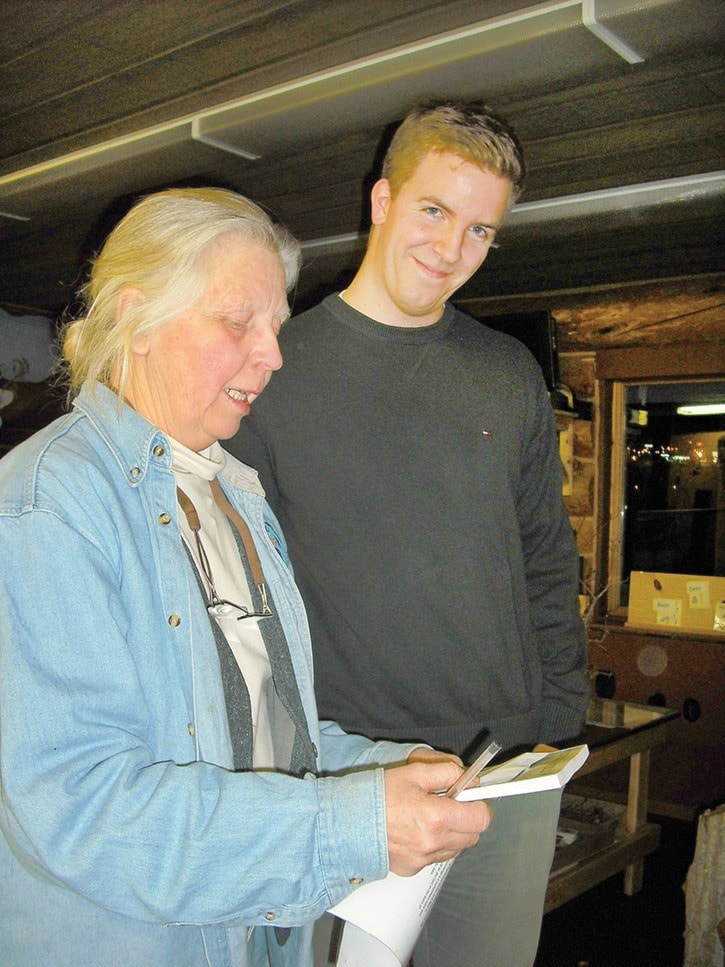There are a couple reasons why Wyatt Klopp’s presentation on the subject of climate change at Scout Island Nature Centre on Feb. 6 was exciting to members of the Williams Lake Field Naturalists.
For one thing this University of Northern British Columbia grad student spent a couple summers working at Scout Island. Secondly he is one of the rare summer students to pursue an interest in the field of botany.
Klopp is a masters student enrolled in the Natural Resources and Environmental Studies (NRES)program at UNBC. During his presentation Klopp shared an insight into his thesis titled, The Mountain Pine Beetle, Climate Change, and the Rising Bioenergy Sector, with 20 members of the Field Naturalists Club.
Klopp hopes to have his work completed and to be in a position to defend his thesis in a year’s time.
He explained the carbon cycle and greenhouse gas emissions as it relates to the mountain pine beetle epidemic.
“The potential release of greenhouse gas emissions from the death and decay of the pine trees poses a serious threat to our efforts in mitigating climate change,” he said. “Greenhouse gas emissions are known causal agents of climate change and efforts are underway to reduce these emissions.”
While the mountain pine beetle outbreak is a naturally-occurring cyclical phenomenon, the most recent outbreak of the past dozen years or so is unprecedented in its magnitude and severity, Klopp pointed out.
His study focuses on the carbon storage potential of harvested wood products and use in the face of the mountain pine beetle epidemic, and the accelerated, non-sustainable harvest that has resulted in an attempt by government and industry to utilize the dead trees before they lose economic value.
With this decline in wood fibre value there has been a rise in the bioenergy sector, which utilizes wood biomass to generate heat and electricity. Up to now, Klopp noted, the main source of biomass for the bioenergy sector in B.C. has been a byproduct of the wood product industry in the form of wood ‘waste.’
New on the horizon are three new forest tenures created by the province that will allow the bioenergy sector to explicitly harvest biomass directly from the forest. Up to now, Klopp said, it hasn’t been considered economically feasible to directly harvest stands or salvage slash piles for bioenergy, nor a good idea to harvest standing trees, especially green, growing trees for this sector.
Bioenergy comes with the interesting assumption of carbon neutrality, that carbon emissions are offset by regrowth of trees, Klopp stated.
“I’ll argue that bioenergy emissions in B.C. may not be carbon neutral because we are taking more fibre from the forest than is growing,” Klopp said. “The assumption of carbon neutrality is based on the pretence of sustainable forestry.”
However, Klopp continues to suggest that harvesting up until this point has not been sustainable, as seen with the forthcoming mid-term timber supply gap.
The determination of carbon neutrality has many shades of gray, Klopp admitted. He concludes that the carbon benefits of bioenergy is uncertain and are not known whether they’ll play a role in mitigation or accentuating climate change.
“Bioenergy requires careful consideration,” Klopp asserted. “Each stand in the forest is very different and they can’t be treated all the same.”
One member of the audience to pose serious questions to Klopp was Mircea Rau of the UBC Research Forest. He commented afterwards that it was very interesting for a student outside the forestry field to tackle a subject so intricately tied to forestry.
